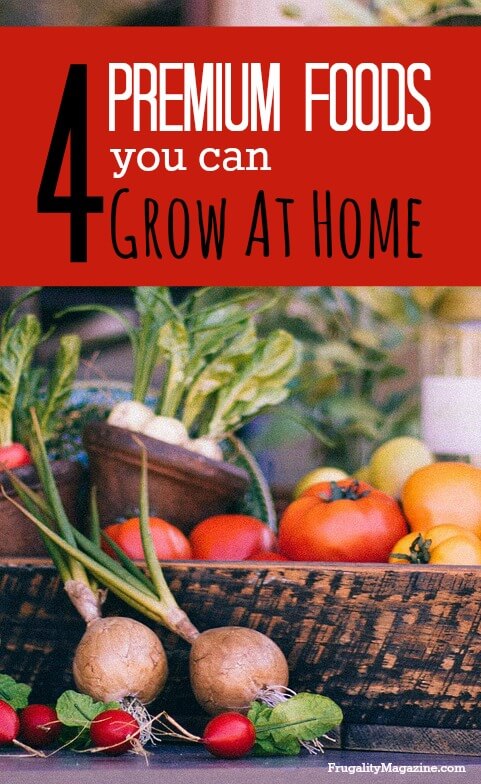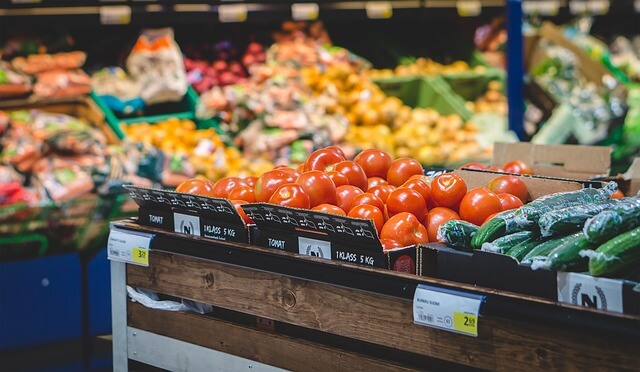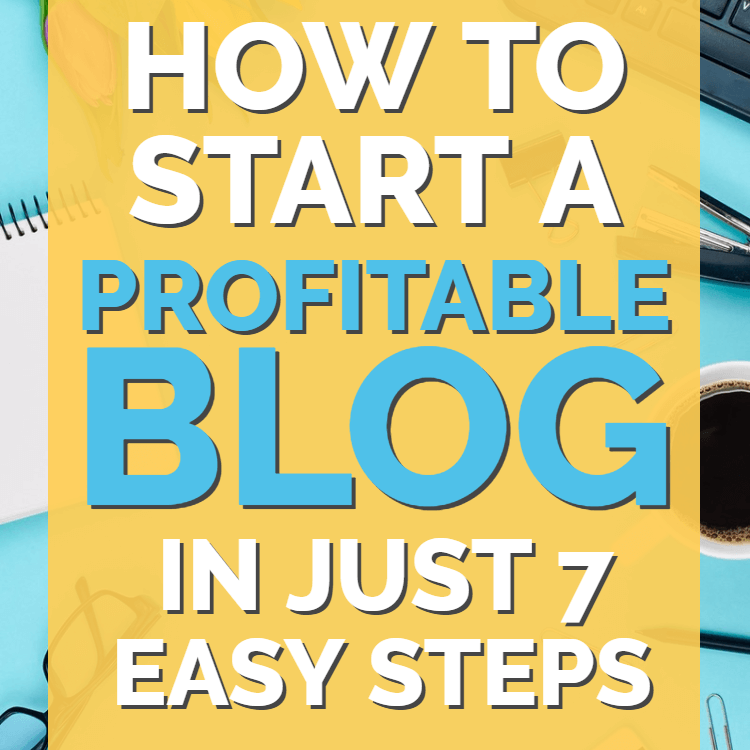Contents
I’m often surprised by just how much time (and money) some people spend on growing very cheap vegetables.
After all, while there’s a beauty to being self sufficient you could argue that the work involved in growing things like carrots and potatoes simply doesn’t make any sense when they can be bought so cheaply from your local supermarket.
But that isn’t the case for all foods. Some cost a ridiculous amount of money to buy, yet they can be grown by virtually anyone with a little piece of land available.
And it’s these premium foods that I like to focus a lot of my efforts on; and that I recommend you consider growing yourself. Because when you grow your own you’ll be able to not only eat like royalty but you’ll also save a lot more money than you would just growing staple crops.
So what are these budget busters and how do you grow them yourself?
Purple Sprouting Broccoli
As a child I always hated broccoli; unfortunate as my parents virtually force-fed it to me my entire childhood because it was “good for me”. Parents just don’t understand, do they?! 😉
But in contrast to “normal” broccoli, the purple sprouting variety stands out for a number of reasons. Firstly it’s very slow growing. While normal brocolli will shoot up producing a tasty crop in a matter of a few months, purple sprouting brocolli can take 9 months or more between planting and harvesting. And that’s a long time to tie up some land – hence the reason why it’s so expensive to buy.
But there’s more. Purple sprouting broccoli is ready to eat in the spring which makes it a really great crop to grow. You struggle through the long, cold winter and finally the weather starts to break. Looking around the vegetable plot virtually everything has already been harvested or has perished in the cold.
But not our broccoli.
No, our broccoli is thriving. It’s the one thing that’s ready to produce at this time of year. Suddenly the buds burst forth and you find yourself drowning in ever more delicious fronds of purple sprouting broccoli.
From a dozen or so plants that we grew last year, and when compared to supermarket prices, I’d say we turned a single pack of seeds into $100+ of purple sprouting broccoli – and best of all it took virtually no work at all.
Simply plant the seeds in spring in good quality seed compost. Keep them warm and moist and soon enough the seedlings will be showing their little heads. Once they get to a few inches tall and the frosts have passed simply plant them out in full sunshine. I recommend putting a net over the young seedlings as your local wildlife population may well take a shine to them afterwards though once they get going the net can be safely removed.
Keep them watered and weed them every week or two and your purple sprouting broccoli will merrily grow away all through the summer, aumtumn and winter and produce a bumper (and very valuable) crop the next spring. Nothing could be simpler.
Mange Tout
There’s nothing I like more than a delicious, crunchy stir fry filled with bean sprouts, peppers and mange tout. Except mange tout are not only obscenely expensive but are also often flown half way round the world to get to your plate. Many of the mange tout we eat in the west has been grown in Africa before being flown to your local supermarket. Talk about a carbon footprint!
There’s something else you should know too. Mange tout and their cousins the sugar snap peas are naturally high in sugar and ar some of the sweetest vegetables around. However just like sweet corn, once the crop leaves the plants the sugar content starts to drop. In other words the sooner you can eat them after picking, the better they’ll taste.
Which means that growing your own mange tout makes sense from so many angles; it’s better for the environment, they taste better and you’ll save a heap of money. What’s not to like?!
Of this list, mange tout are probably the most problemtic crop to grow – for me at least. It seems that everything is against me. Heavy rain damages the plants. Hot weather dries them out. The snails and slugs love to attack them and there’s a regular ariel raid by pigeons and sparrows.
However a bit of netting – just like we put on a purple sprouting broccoli – should keep most of the pests off. A packet of seeds can be bought early in the year with the seedlings started easily either in compost or even easier on damp kitchen towel on your windowsill.
Once they sprout, transplant them into long neat rows in your vegetable garden, add the netting both to protect the plants and to give them some support and hand weed them as necessary.
It may be a little more time intensive to keep these sensitive plants healthy through the season but you’ll go from seed to harvest in a matter of a few months. By planting a new batch of seeds every few weeks you can keep your plates full right throughout the summer and early autumn.
Baby Sweet Corn
Here in the UK it’s easy to pay £1 or more for a few baby sweet corn heads. And while I love it in stir fries and eaten raw, dipped in red pepper humous, I hate to pay those prices.
Luckily once again baby sweet corn is quite simple to grow and seems to suffer from very few pests or diseases. Even as a complete amateur when it comes to gardening I’ve managed to grow a healthy crop every year for quite some time.
For a full guide to growing baby corn check out my previous guide.
Asparagus
When the fresh asparagus tips start to appear in the supermarkets I know that the good weather is on it’s way. Fried, steamed or gently boiled for a couple of minutes then tossed in melted butter they really are a meal fit for a king.
However before you start to grow the asparagus fern you should be aware that this is a long term investment. When you buy and plant the crowns you’ll be waiting several years before your first small harvest.
In other words if you want to grow asparagus you’ll need not only time; you’ll also need some space because you’ll need to leave your asparagus bed well alone for a long time to come.
But for those people who are willing to wait a few years before their efforts are rewarded this is one of the most interesting food plants to grow; both tasty and beautiful. And it goes without saying that you’ll be able to save yourself an impressive sum of money down the road.
What food plants to you grow? Have you tried growing any of the premium foods mentioned above?











[…] Purple sprouting broccoli […]